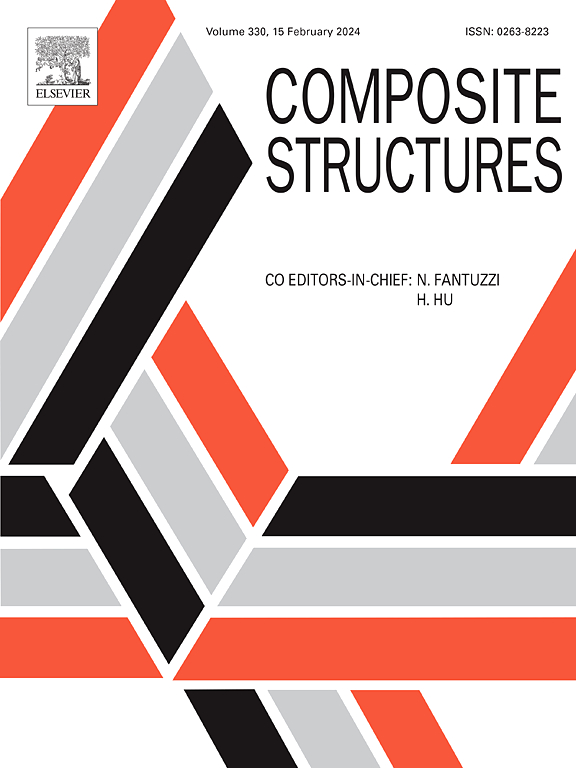Investigations on the failure mechanism of UHPC- aluminum honeycomb sandwich beams under three-point bending
IF 7.1
2区 材料科学
Q1 MATERIALS SCIENCE, COMPOSITES
引用次数: 0
Abstract
To broaden the application of lightweight honeycomb-like structures in civil engineering, this study presents a novel sandwich structure composed of Ultra-High-Performance Concrete (UHPC) face sheets and an aluminum honeycomb core. This study investigates the flexural behavior of UHPC-aluminum honeycomb sandwich beams under three-point bending to elucidate the loading capacity and failure mechanisms. Results reveal that the proposed UHPC-honeycomb sandwich construction exhibits significantly enhanced load-bearing capacity and bending stiffness compared to solid UHPC beams of equivalent mass. this research elucidates the influence of the face sheet-core strength ratio on the resulting failure mode. A high face sheet-core strength ratio promotes local buckling failure, while a low ratio leads to bending failure. An Optimal strength ratio facilitates shear failure, maximizing the structure’s energy absorption capability.Finally, the comparison on different interface connections, shear studs and adhesive bonding, in terms of failure performance is also investigated.
UHPC-铝蜂窝夹层梁三点弯曲破坏机理研究
为了扩大轻型蜂窝状结构在土木工程中的应用,本研究提出了一种由超高性能混凝土(UHPC)面板和铝蜂窝芯组成的新型夹层结构。本文研究了uhpc -铝蜂窝夹层梁在三点弯曲下的受弯性能,以阐明其承载能力和破坏机制。结果表明,与同等质量的UHPC实心梁相比,UHPC-蜂窝夹层结构的承载能力和抗弯刚度显著提高。本研究阐明了工作面板芯强度比对最终破坏模式的影响。高强度比会导致局部屈曲破坏,低强度比会导致弯曲破坏。最佳强度比有利于剪切破坏,最大限度地提高结构的吸能能力。最后,对不同界面连接方式、剪力钉连接方式和粘接方式的破坏性能进行了比较。
本文章由计算机程序翻译,如有差异,请以英文原文为准。
求助全文
约1分钟内获得全文
求助全文
来源期刊

Composite Structures
工程技术-材料科学:复合
CiteScore
12.00
自引率
12.70%
发文量
1246
审稿时长
78 days
期刊介绍:
The past few decades have seen outstanding advances in the use of composite materials in structural applications. There can be little doubt that, within engineering circles, composites have revolutionised traditional design concepts and made possible an unparalleled range of new and exciting possibilities as viable materials for construction. Composite Structures, an International Journal, disseminates knowledge between users, manufacturers, designers and researchers involved in structures or structural components manufactured using composite materials.
The journal publishes papers which contribute to knowledge in the use of composite materials in engineering structures. Papers deal with design, research and development studies, experimental investigations, theoretical analysis and fabrication techniques relevant to the application of composites in load-bearing components for assemblies, ranging from individual components such as plates and shells to complete composite structures.
 求助内容:
求助内容: 应助结果提醒方式:
应助结果提醒方式:


